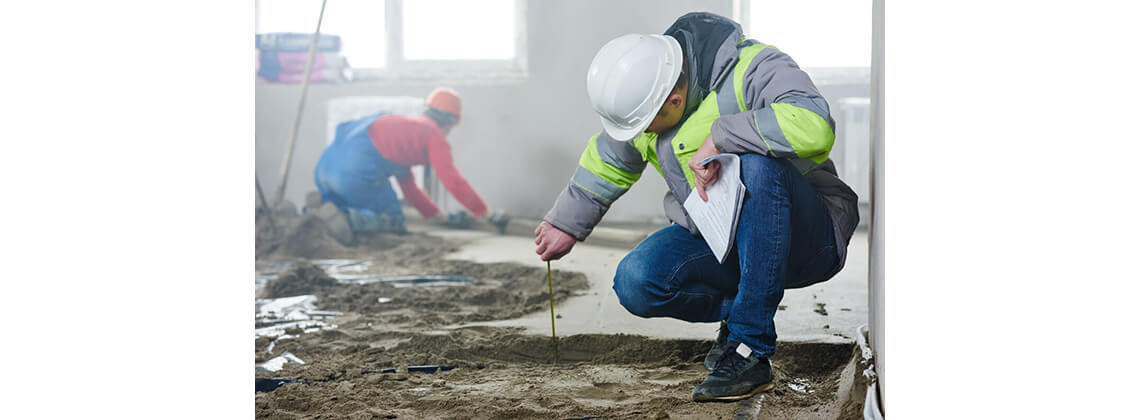In the world of construction, every structure stands on a foundation of trust – trust that the materials used will withstand the test of time, trust that the building will remain standing in the face of adversity, and trust that those who inhabit it will be safe. This trust is not simply assumed; it is earned through rigorous testing and analysis of construction materials. In this valuable guide, we will delve into the vital role that construction materials testing plays in ensuring the safety, durability, and quality of buildings. From concrete to steel, from soil to glass, every material undergoes meticulous examination to ensure that it meets the highest standards. Join us as we explore the importance of building with confidence through construction materials testing.
The Foundation of Safety: Why Construction Materials Testing Matters
Building a Foundation of Trust
At the heart of every structure lies its foundation, and the strength and integrity of this foundation are paramount to the safety and stability of the entire building. This is where construction materials testing plays a critical role. Before construction begins, soil testing is conducted to assess its load-bearing capacity, compaction, and drainage characteristics. By analyzing these properties, engineers can determine the type of foundation that will best support the structure and mitigate the risk of settlement or instability over time.
Ensuring Structural Stability
Once the foundation is in place, attention turns to the materials used in the superstructure – the walls, floors, and roof that define the building’s form. Engineers must test concrete, steel, wood, and other construction materials to ensure they possess the necessary strength, durability, and resistance to external forces such as wind, seismic activity, and fire. Through a combination of laboratory testing and field inspections, engineers can identify any weaknesses or defects in the materials and take corrective action before they compromise the structure’s integrity.
Keep Reading: Essential Construction Materials Testing Equipment Guide.
Protecting Against Environmental Factors
Buildings are exposed to a variety of environmental factors that can degrade materials over time. Exposure to moisture, temperature fluctuations, UV radiation, and chemical pollutants can all affect the performance and lifespan of construction materials. By subjecting materials to accelerated aging tests and environmental exposure chambers, researchers can simulate the effects of these factors and develop strategies to enhance durability and longevity.
Testing Techniques and Methods: A Closer Look
Concrete Testing
Builders commonly use concrete as a construction material, valuing its strength, versatility, and affordability. However, they recognize that not all concrete is created equal; variations in mix design, curing methods, and quality control can impact its performance. Concrete testing involves a series of procedures to evaluate its compressive strength, workability, permeability, and durability. Workers collect samples from the construction site and subject them to compression tests, slump tests, and air content tests. This process assesses their properties and ensures they meet the specifications outlined in the project plans.
Steel Testing
Steel is another essential building material, valued for its high strength-to-weight ratio and resistance to corrosion. To ensure the structural integrity of steel components, they undergo a battery of tests to measure their tensile strength, yield strength, ductility, and hardness. Technicians cut samples from steel beams, columns, or rebar and subject them to tension, bend, and hardness tests to verify their mechanical properties. Additionally, they test steel coatings for adhesion, thickness, and corrosion resistance to prevent premature failure and ensure long-term performance.
More Reading: Construction Materials Testing Equipment: CertifiedMTP Picks.
Soil Testing
The soil beneath a building’s foundation provides the support and stability needed to withstand the weight of the structure above. Soil testing involves drilling boreholes and extracting samples at various depths to assess their composition, density, moisture content, and shear strength. These properties are analyzed to determine the soil’s bearing capacity, settlement potential, and susceptibility to erosion or liquefaction. Based on the results of these tests, engineers can design foundations that distribute loads effectively and minimize the risk of settlement or structural failure.
Material Characterization
In addition to testing individual construction materials, researchers also conduct material characterization studies to understand their behavior under different conditions. This may involve analyzing the microstructure of concrete or steel samples using microscopy techniques, performing chemical analysis to identify impurities or defects, or conducting thermal conductivity tests to evaluate their heat transfer properties. By gaining insights into the physical, chemical, and mechanical properties of materials, engineers can optimize their performance and develop innovative solutions for complex construction challenges.
Innovations in Construction Materials Testing
Advancements in Testing Technology
The field of construction materials testing is constantly evolving, driven by advances in technology and a growing emphasis on sustainability and performance. Non-destructive techniques such as ultrasonic testing, infrared thermography, and ground-penetrating radar now augment traditional methods like compression and tensile testing. These methods allow engineers to assess the condition of materials without damaging them, providing valuable data for maintenance, repair, and retrofitting projects.
Digital Twins and Simulation Modeling
Digital twins and simulation modeling are revolutionizing the way construction materials are tested and evaluated. By creating virtual replicas of buildings and structures, engineers can simulate various scenarios and analyze the behavior of materials under different loads, temperatures, and environmental conditions. This allows them to optimize designs, predict performance, and identify potential vulnerabilities before construction begins. Digital twins also enable real-time monitoring and analysis of structural health, providing early warning of any signs of deterioration or damage.
You may also read Humboldtmfg Construction Materials Testing Equipment.
Materials Recycling and Circular Economy
With growing concerns about resource depletion and environmental pollution, there is a renewed focus on recycling and sustainability in construction materials testing. Researchers are exploring innovative ways to reuse waste materials, such as recycled concrete aggregates, fly ash, and reclaimed timber, in new construction projects. By incorporating recycled materials into concrete mixes, asphalt pavements, and structural components, engineers can reduce the environmental impact of construction and promote a more circular economy.
Final Thoughts
In the end, construction materials testing is a critical aspect of building with confidence. By subjecting materials to rigorous testing and analysis, engineers can ensure the safety, durability, and quality of buildings, infrastructure, and other structures. From soil testing to concrete testing to steel testing, every step of the construction process relies on accurate and reliable data to make informed decisions and mitigate risks. As technology continues to advance and sustainability becomes increasingly important, the future of construction materials testing holds promise for innovative solutions that will shape the built environment for generations to come.
Certified MTP offers a full line of General Construction and Jobsite Tools such as Sledge Hammers, Digging Bars, Crow Bars, Pry Bars, Brick Masonry, Stripping Bars, and Landscape Tools

